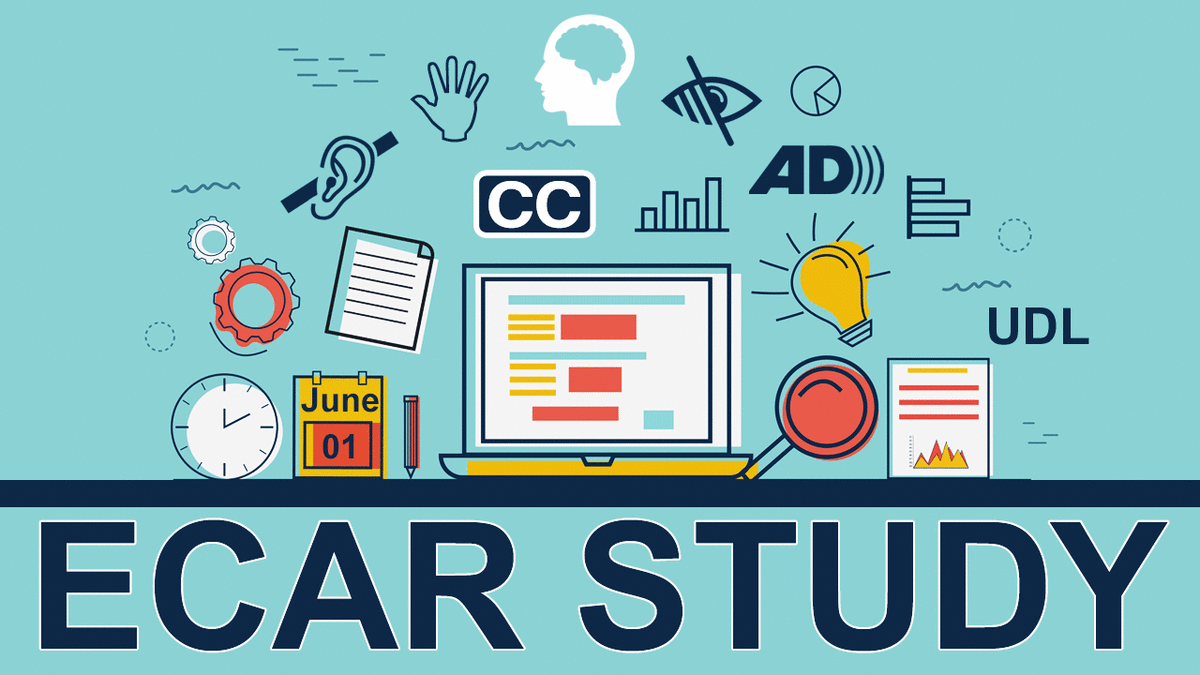Technology in higher education can be both an aid and a challenge for students with disabilities. To better understand academic technology needs, Dana C. Gierdowski and Joseph Galanek studied nearly 2,000 open-ended responses from students who identified as having a physical and/or a learning disability. In ECAR Study of the Technology Needs of Students with Disabilities, 2020 students reveal how they would like instructors to use technology to improve learning.
Key Findings
Findings of ECAR Study of the Technology Needs of Students with Disabilities, 2020 highlight the following points:
- Students want their instructors to make all course materials and resources accessible online, but class notes and presentation slides were the most commonly requested, followed by assignments/tests and lectures. Respondents reported that having online access is important because it lets them review the content both before and after class, complete their work in suitable environments, and catch up on information they miss when taking notes or if they are out sick.
- The learning management system (LMS) is considered key to providing access for students with disabilities to online course content, and they would like faculty to use it more. Students want an LMS layout that is intuitively structured, organized, clearly labeled, and updated so that they can find the materials they need with ease.
- Students want to use their mobile devices in the classroom to take notes. Most students told us that they would like to use their laptops to take notes, as they often can't handwrite notes fast enough to keep up with their instructors' lectures. They also reported that using devices in the classroom allowed them to more easily access online materials to follow along with lectures, make notes directly into the online PowerPoint, record lectures, take photos of any items on the classroom's board, or make voice memos.
- Students want training for themselves and their instructors on how to use the technology on their campus and for their classes. Many students reported that they needed training and direction in using software for their courses, as well as help in navigating the LMS. Students also observed that instructors needed to be trained in how to use the technology they expected their students to use.
- Greater use of videos or other media in the classroom and online can benefit students with disabilities by presenting course materials in multiple formats. Many students want course materials presented in alternative formats, such as video or pictures, rather than solely through lecture, reading, and PowerPoint. They reported that these modes assist in comprehension and could also make face-to-face classes more engaging and interesting.
- Students with disabilities want to have a more engaging classroom experience through the use of interactive technology. Students told us they want to have educational games and polling to foster a more interactive classroom rather than passively following lectures. Some indicated that gamification of course materials (e.g., Kahoot) could increase the interactivity of their classroom experience by allowing them to actively use their mobile devices for learning.
- Assistive/accessible technology such as captioning and text-to-speech software is important to their academic success, and students with disabilities would like instructors to account for this when developing their courses. By captioning videos, selecting digital materials that have an audio option, and/or formatting files so they are compatible with text-to-speech applications, instructors can offer students more ways to process information. Students also recognize that incorporating more of these options increases access to all learners and fosters a more inclusive environment.
Results
The study suggests higher education pedagogical practices should adopt Universal Design for Learning (UDL) principles to expand accessibility. UDL is a reframing of accessibility for learning environments. These measures can help all students, particularly during this era of emergency remote teaching.
Related Resources
- "7 Things You Should Know About Universal Design for Learning," EDUCAUSE, April 6, 2015.
- Thomas Tobin, "Taking IT Way beyond Accessibility: 5 + 4 = 1 Approach," EDUCAUSE Review, August 12, 2019.
- Erin DeSilva, Adam Nemeroff and Patricia Lopez, "Igniting a Universal Design Mindset on Campus," EDUCAUSE Review, December 4, 2017.
- Jessica Phillips, "5 Tips for Accessibility and Universal Design for Learning," Transforming Higher Ed (blog), EDUCAUSE Review, February 9, 2018.
